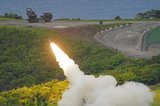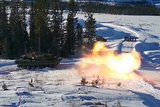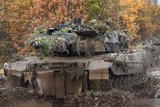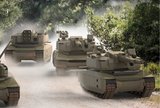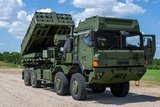Canada trials SRM-encased artillery shells
The Canadian Army's research and development arm is trialling artillery shells encased in structural reactive materials (SRM) rather than conventional steel.
The new shells are being trialled to assess their potential to increase the power of artillery munitions while reducing collateral damage. The results of initial trials conducted at the Defence Research and Development Canada’s (DRDC) Suffield Research Centre in Alberta in fall 2017 are positive, but research of up to five more years is still required.
SRM reacts itself and with the air – burning and increasing the explosive power and blast pressure within the lethal radius of the munition. It also produces smaller fragments that have more deceleration than with steel, travel less distance and cause less damage outside the intended blast area.
The rounds function similarly to thermobaric weapons, which use combustible liquids or aerosols, but with one key difference.Fan Zhang, lead scientist at the Suffield Research Centre, said: 'Solid SRM can be used for munition shells owing to its high mechanical strength, with its fragments having a similar effect of combustion and spreading out but in a solid state and with only one fuse, one explosion.
'So it very much simplifies the whole process, while giving significantly higher energy output than current explosive yields.'
Making the blast power adjustable is also one of the DRDC’s objectives.
The most recent trials saw separate elements of the Canadian armed forces collaborate. The army assessed the viability of SRM in an artillery context, and the Royal Canadian Air Force researchers tested it in the form of 500lbs air-dropped bombs.
Maj Travis Maxwell, with the army’s Directorate of Land Resources, said: 'The Canadian Army needs artillery ammunition to exploit technological advancements that improve precision, limit collateral damage and concentrate effects so that commanders have options appropriate for a wide spectrum of tactical problems.'
More from Land Warfare
-
![Rheinmetall and KNDS tank tie-up narrows trans-European options]()
Rheinmetall and KNDS tank tie-up narrows trans-European options
The French and German governments signed an agreement in June 2018 to cooperate on the development of a new main battle tank under the Main Ground Combat System programme but the effort has struggled. This new agreement may damage it further.
-
![Hungary set to begin using Hero 400 loitering munitions]()
Hungary set to begin using Hero 400 loitering munitions
Developed by Israel's Uvision and with systems being sold in the thousands to multiple European NATO countries and the US, the Hero family of loitering systems is also in production in the US and Italy, the latter through Rheinmetall.
-
![Light Reconnaissance Strike – enabling a vital mission set (Studio)]()
Light Reconnaissance Strike – enabling a vital mission set (Studio)
A new system-of-systems concept will unlock digital integration of sensors and weapons for Light Forces, allowing them to shape the battlefield environment on their own terms and upgrade legacy platforms.
-
![Lockheed Martin to look further afield for GMARS rocket system opportunities]()
Lockheed Martin to look further afield for GMARS rocket system opportunities
The HX truck is already in use in many NATO and allied countries around the world as a logistics vehicle and carrier for high-value systems, including missile firing weapons, so its use for the Global Mobile Artillery Rocket System makes logistical sense.








